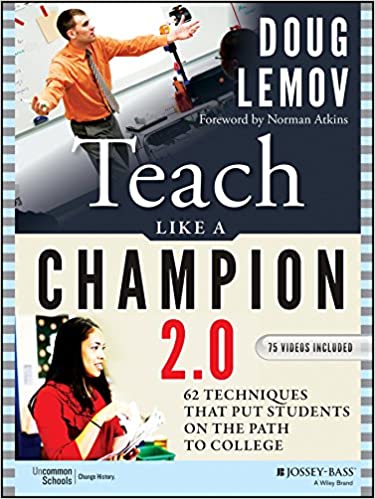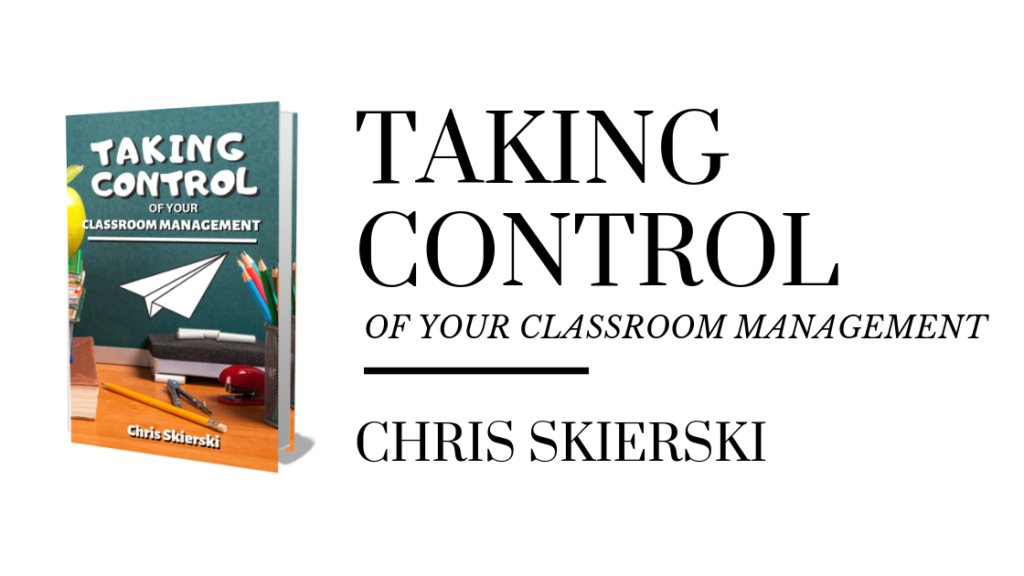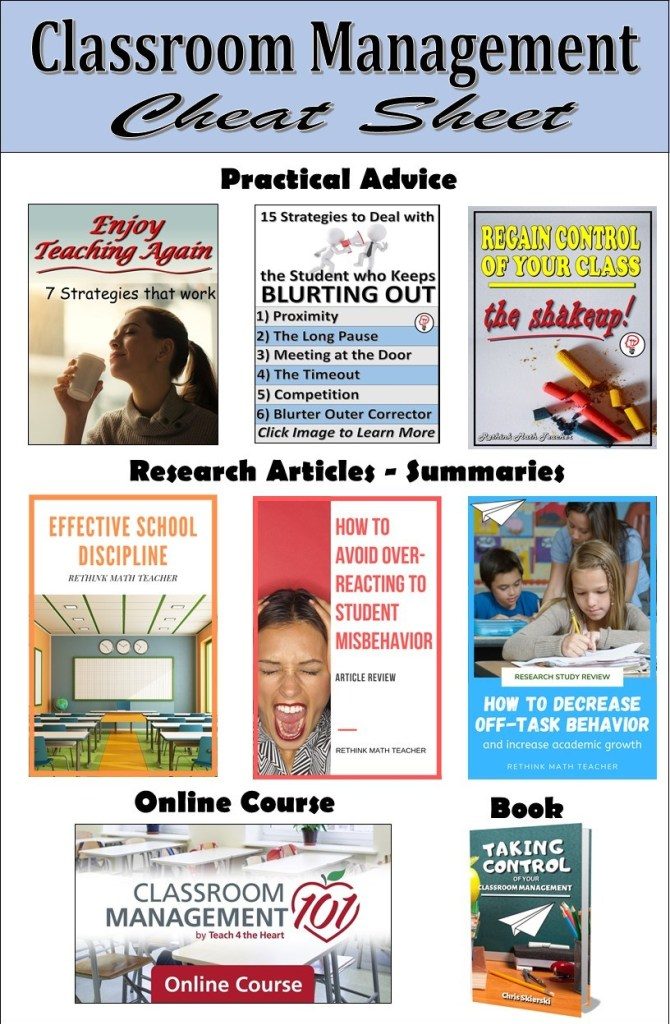
Today in class we were reviewing circles. After watching a video on the reading of Sir Cumference and the Knights of the Round Table, defining the terms, and defining Pi, we went on to writing down the formula for circumference, which students were to write in their book.
I wrote the definition on the board, C =2πr.
I asked one student what the C stood for. Since we had just spent all that time learning this term, she knew that C stood for circumference.
I asked a second what π stood for. Since we had just wrote that definition in our composition book, this student also got this answer correct.
I asked a third what the r stood for, which was also answered correctly.
Great. I thought to myself. We are all paying attention and we know the terms. Finally, I asked another student what is formula for circumference.
Asking Questions
I feel kind of silly asking such remedial questions to my class. But I have to tell you, it’s working.
It helps keep them engaged. It gives them an opportunity to talk. And, because they’re getting the answers correct, it gives me an opportunity to praise them and they feel a sense of accomplishment.
Some students come to school, or math class, expecting to fail. So giving them these opportunities to be successful has helped.
So when I asked the last student for the formula for circumference just 30 seconds after I had written it on the board, I was trying to give him the opportunity to be successful.

The Benefit of Randomly Calling on Students
There is a value in randomly calling students to answer questions. It keeps everyone engaged. Students are less likely to tune you out if they know that there’s a high likelihood of being called upon. Cold calling on students decreases apathy and increases engagement. It is a strategy you should be using. Call on all of your students, every day. And do so randomly – so that students don’t know who’s going to be called next.
Your questions should also be short and easy to answer. Notice the questions I asked above. What does r stand for? What does the C stand for? Which numbers should we multiply first?
It is wise to preplan your questions and consider the wrong answers you might encounter so that you can appropriately deal with them.
An Unacceptable Answer: I Don’t Know
“What’s the formula for circumference?” I asked the last student. He looked up, his eyes darted around the room as if he had been in a daze. He looked at the board, there was a circle drawn with the radius, diameter, and circumference all labeled. Next to it was the letter Pi, followed by an equal sign and the number 3.14. Above that was C = 2πr. The very thing my students had just been instructed to write in their notebooks.
“I don’t know he said.” The class burst into laughter. Several even commented to him that it was the only thing written on the board, which was true, but obviously didn’t need to be said.
How Do We Handle a Student Who Says I Don’t Know
In the scenario above, I was not dealing with defiance. I was dealing with a student who wasn’t paying attention and didn’t have the mental wherewithal to figure out that the answer was the only thing written on the board.
But sometimes a student will say, “I don’t know,” because they don’t want to answer questions in your class. Saying “I don’t know,” is easier than trying.
What if my student had mumbled, “I don’t know,” and then rolled his eyes and stared out the window? What if he had just looked at me and shrugged his shoulders?
The Adverse Effects of the Apathetic Students
Many teachers don’t know how to handle a student who says, “I don’t know,” whether he’s being defiant or just not paying attention, so they ignore the student and spend the rest of the class (or year) tiptoeing around him, attempting not to call on him so as not to get another snarky or disruptive remark.
But think about how that will play out.
For starters, that student will learn very little this year.
Beyond that, the message will be received by the other students that not participating is okay, and there won’t be any consequences (besides maybe a bad grade).
This behavior needs to be addressed and corrected, for the student’s benefit, the other student’s benefit, and for your sanity.
BUT HOW?

No Opt Out
The following strategy is recommended by Doug Lemov in his wonderful book Teach Like a Champion 2.0. If you haven’t read it, you should.
The strategy is called, ‘No Opt Out,” and the premise is simple. The students are not allowed to opt out of answering a question. Instead, when they respond that they don’t know, you get hints or answers from elsewhere and then circle back to the student.
Here’s what it looks like.
Option 1
The student looks at you and says, “I don’t know.”
Then you or another student provide a cue.
So when my student said he didn’t know the formula for circumference I could have said, “Who can help Ezekial and tell him what page of the book this formula is found on?”
Or I could have said, “Ezekial, the formula is on the board, please read it.”
Good Hints and Bad Hints
There is such a thing as a bad hint. Here’s an example, we’re converting mixed numbers into improper fractions and I ask someone how to do this, and he says I don’t know. I then ask a student for a hint and he says, “It rhymes with pultiply.” And I add, “Yes, it rhymes with pultiply but starts with an M.” (Of course, there is not such word as pultiply, but with these hints Ezekial could figure out that the word he is supposed to say is “Multiply.” But this hint has not helped Ezekial really learn anything that will help him in the future.
Instead, we can give hints on:
- Where to find the answer
- How to find the answer
- Another name for a term in a problem (what’s another name for denominator so that Ezekial knows which two numbers to look at)
- Explain a mistake that was made
A Caveat
While No Opt Out is a great strategy, it is important that this type of cueing and reinforcement of expectations that you don’t disrupt the momentum of your class. I have seen many classes spend several minutes trying to answer one question, and by the time the teacher finally pulls it out of someone, the class has forgotten what they were even doing to begin with.
This is why it’s important to ask for good hints.
I hate when a teacher asks a student what the next step in the process is, and that student doesn’t know, so he asks another for help, and that student doesn’t know, so he asks a third. Don’t waste that much time, instead go to Option 2..
Option 2
The other option is for you or another student to provide the answer and then have the student repeat it.
“Ezekial,” I said, firmly, “Look at the board. The formula for the circumference is C = 2πr,” I say while pointing to the equation written on the board. “Ezekial.” I say his name again to make sure he’s paying attention, “What is the formula for the circumference of a circle?”
If he still says, “I don’t know.” I would respond, “Ezekial. The circumference of a circle is C = 2πr. Ezekial, what is the formula for the circumference of a circle?”
Or I could simply say, “Ezekial, the answer is C = 2πr. Ezekial, what is the answer?”

Circling Back
No matter which option above you chose, the conversation ends with the student saying the correct answer. Whether he figures it out on his own, or is just repeating it back to you, make sure it is understood that not answering the question, or saying “I don’t know,” is not an option.
The power of this technique is in you circling back to the student so that he knows he is not off the hook because he said, “I don’t know.”
How to Deal with Open Defiance
What if the student still won’t answer after you ask her to repeat the answer back to you?
This is an instance of open defiance and you need to handle it as a discipline issue.
Conclusion
Set the tone in your classroom that you believe in your students and you expect them to participate in their education. That includes answering questions and doing their work. Not doing either of these is not an option.
You can increase engagement by randomly calling on students, and doing so often and for smaller/shorter answers.
If a student says that they don’t know the answer to your question, implement the ‘no opt out’ method by either you or another student giving that student a good hint, or by giving him/her the answer and having him/her repeat it back to you.
For more great advice on classroom management tips and strategies, download my cheat sheet.


